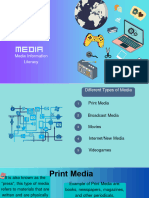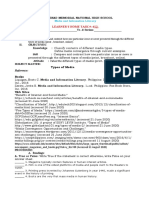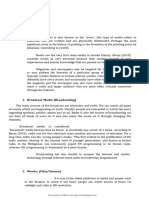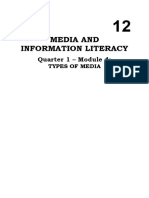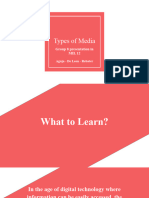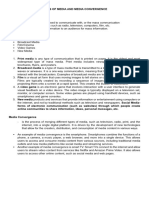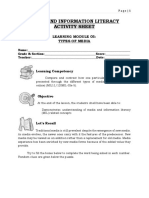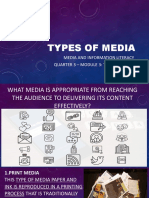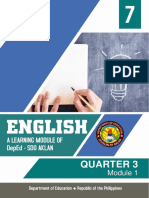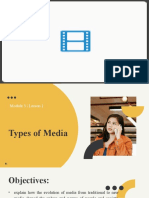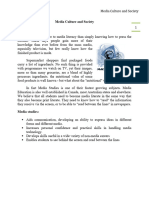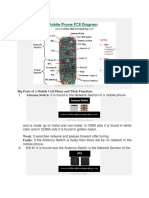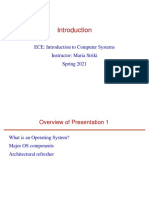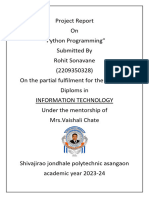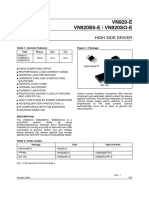0% found this document useful (0 votes)
12 views19 pagesTypes of Media
The document outlines various types of media, including print media, broadcast media, film, internet/new media, and video games, highlighting their characteristics and cultural significance. It discusses media convergence, which allows different media sources to combine and be accessed across multiple devices. Additionally, it classifies media into categories such as print, non-print, electronic, projected, and non-projected media.
Uploaded by
alexajoydistritoCopyright
© © All Rights Reserved
We take content rights seriously. If you suspect this is your content, claim it here.
Available Formats
Download as PDF, TXT or read online on Scribd
0% found this document useful (0 votes)
12 views19 pagesTypes of Media
The document outlines various types of media, including print media, broadcast media, film, internet/new media, and video games, highlighting their characteristics and cultural significance. It discusses media convergence, which allows different media sources to combine and be accessed across multiple devices. Additionally, it classifies media into categories such as print, non-print, electronic, projected, and non-projected media.
Uploaded by
alexajoydistritoCopyright
© © All Rights Reserved
We take content rights seriously. If you suspect this is your content, claim it here.
Available Formats
Download as PDF, TXT or read online on Scribd
/ 19
